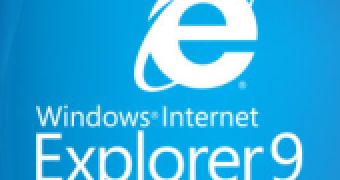Internet Explorer 9 is the best browser available today for those users that value their privacy and understand the need to protect it.
When it comes down to user privacy protection, IE9 is superior to all rivals including the latest iteration of Firefox, and especially Chrome.
This simply because IE9 puts users in control over who can track their online activity. It does this through supporting the Do Not Track User Preference, as a DOM property and an HTTP header, as well as offering the Tracking Protection feature.
Firefox 4.0, as well as other browsers, with the exception of Chrome, also play nice with the Do Not Track header, but it’s my opinion that this is far from sufficient to truly protect user privacy.
Do Not Track is more of an ideal solution for an ideal scenario in which advertisers and third-parties that track the users’ online activities would care about their privacy. Fact is that they couldn’t care any less.
Illustrative of this is Google expressing its position on the matter of legislation designed to enforce user privacy. The Mountain View-based search giant is opposing California Senate Bill 761, designed to make sure that companies enable consumers with a method of opting-out from the collection, usage or storage of their personal data.
In fact, the team at Google building Chrome is governed by the decisions of those responsible for the advertising business, since Chrome remains the only major browser not to support the Do Not Track header.
As far as I’m concerned, Do Not Track is certainly better than nothing, but it’s not good enough. Why? Because it all but takes the user out of the equation. All that consumers get to do is signal that they don’t want their online behavior tracked, their data harvested and stored.
The actual decision of whether to track them or not, despite their personal presence, lies with companies such as Google, which doesn’t think that legislation forcing it to protect user privacy is a good idea to begin with.
Do Not Track is like leaving the front door to your house wide open while displaying a Do No Steal sign, and trust passers-by to respect your wish.
Users need more than wishful thinking, they need locks to protect their homes and mechanisms to protect their data at browser-level. Tracking Protection is such a mechanism.
Browsers should provide customers with actual control over who gets to track their data instead of leaving them at the mercy of advertisers and other third-parties tracking them.
IE9 Tracking Protection is an opt-in mechanism that works with Tracking Protection Lists (TPLs) provided by major online privacy watchdog organizations. It’s turned off by default, users needing to enable it, find a TPL and add it to the browser.
TPLs limit calls to sites in the lists, or permit call, since specific web destinations can be whitelisted, and not just blacklisted. In the cases in which they limit the information that IE9 exchanges with a website, TPLs also block tracking and data collection, protecting privacy.
Do Not Track is yet to be widely adopted, is yet to find consensus among the advertising industry, and is not supported by legislation to enforce user privacy.
IE9 Tracking Protection is a real world solution to an imperfect online ecosystem where companies profit from harvesting, storing and interpreting user data, offering very little in return, sometimes, not even the option to not be tracked.
Internet Explorer 10 (IE10) Platform Preview 1 (PP1) is available for download here.
Windows Internet Explorer 9 RTW for Windows 7 and Windows 7 SP1 is available for download
here.
Firefox 4.1 for Windows is available for download here. Google Chrome for Windows is available for download here.

 14 DAY TRIAL //
14 DAY TRIAL //